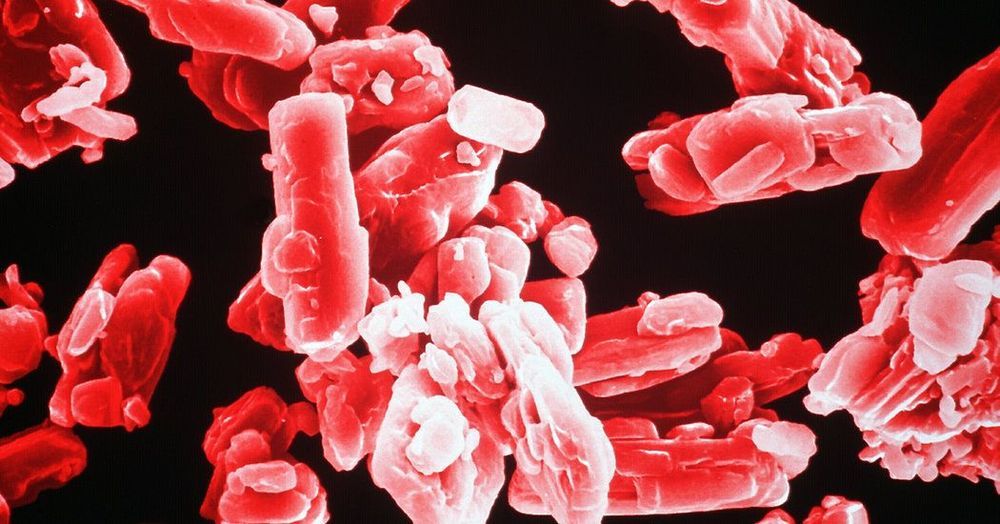Nanowire/nanoribbon is the way to go, Intel head says.
Get the latest international news and world events from around the world.

Check out this Crew Dragon Photo Snapped During a Spacewalk
NASA astronaut Chris Cassidy on Saturday tweeted a cool shot showing SpaceX’s Crew Dragon spacecraft docked with the International Space Station (ISS). The capsule, seen to the right of the picture, looks tiny alongside the enormous space station, but its interior is actually large enough for a human to perform something close to a somersault.
Cassidy captured the image during Friday’s spacewalk with fellow astronaut Bob Behnken. The outing involved ongoing work to upgrade power systems on the space station, swapping old nickel-hydrogen batteries for new lithium-ion batteries. The batteries store power gathered from the station’s main solar arrays and the new ones will provide an improved and more efficient power capacity for the orbiting outpost.
Cassidy later tweeted a couple of other shots from the spacewalk, one a “space selfie” and another taken shortly after the pair returned to the inside of the ISS.


Physicists Create New Isotope of Mendelevium
In an experiment performed at Lawrence Berkeley National Laboratory’s 88-inch cyclotron, a team of physicists successfully created a new isotope of the human-made element mendelevium.
Gorgeous NASA Simulations Show What Sunsets Would Look Like on Other Worlds
How would the Sun look as it dipped below the horizon on a long (17 hour) day on Uranus? Or what would a late-night sunset on Mars look like, when we finally get there? Thanks to some NASA computer modelling, these scenarios are now a little easier to imagine.
What makes a sunset is the interplay of light from the Sun – which includes all the colours of the rainbow – together with the gases and dust in the atmosphere. The less atmosphere, the less impressive the sunset.
Planetary scientist Geronimo Villanueva, from NASA’s Goddard Space Flight Center in Greenbelt, has created simulations of how sunsets might look on Venus, Mars, Uranus, the Saturn moon Titan, and Trappist-1e.


Spectacular New Images Capture the Space Station Cruise Across the Sun
Moving at eight kilometers (five miles) per second, the International Space Station (ISS) circles our planet every 90 minutes. In a 24-hour period, crew members on the ISS experience 16 sunrises and sunsets. Despite how often the station passes directly between Earth and the Sun, capturing an image of the ISS transiting our nearest star is rare.
On June 24, 2020, NASA photographer Joel Kowsky captured such an occurrence from Fredericksburg, Virginia. The image above is a composite, made from six frames, and shows the ISS in silhouette as it moved from right to left across the solar disk while orbiting 400 kilometers (250 miles) above Earth.
The image below shows the position of the ISS in its orbit as Kowsky snapped his photos at approximately 1:15 p.m. U.S. Eastern Daylight Time. The transit lasted approximately 0.54 seconds and was captured while his camera was shooting at 10 frames per second. Watch a video of the transit below.

Happy birthday to the World most important Entrepreneur ( Olorogun Elon Musk)
Happy birthday to the World most important Entrepreneur (Olorogun Elon Musk). We at the Ogba Educational Clinic and Artificial intelligence Hub celebrate and wish to immortalize you by Setting up a club after you (The Elon Musk Club). This is in line with our vision to create small Elon’s that would eventually outdo you from Africa.

Happy Birthday Mr. Elon Musk
Click on photo to start video.
“When something is important enough, you do it even if the odds are not in your favor.”
Happy Birthday Mr. Elon Musk. A little tribute to you from us. #TeamSpaceXLovers #ElonMusk #Birthday #Livinglegend

Mathematical Breakthrough Makes It Easier to Explore Quantum Entanglement
Updated mathematical techniques that can distinguish between two types of ‘non-Gaussian curve’ could make it easier for researchers to study the nature of quantum entanglement.
Quantum entanglement is perhaps one of the most intriguing phenomena known to physics. It describes how the fates of multiple particles can become entwined, even when separated by vast distances. Importantly, the probability distributions needed to define the quantum states of these particles deviate from the bell-shaped, or ‘Gaussian’ curves which underly many natural processes. Non-Gaussian curves don’t apply to quantum systems alone, however. They can also be composed of mixtures of regular Gaussian curves, producing difficulties for physicists studying quantum entanglement. In new research published in EPJ D, Shao-Hua Xiang and colleagues at Huaihua University in China propose a solution to this problem. They suggest an updated set of equations that allows physicists to easily check whether or not a non-Gaussian state is genuinely quantum.
As physicists make more discoveries about the nature of quantum entanglement, they are rapidly making progress towards advanced applications in the fields of quantum communication and computation. The approach taken in this study could prove to speed up the pace of these advances. Xiang and colleagues acknowledge that while all previous efforts to distinguish between both types of non-Gaussian curve have had some success, their choices of Gaussian curves as a starting point have so far meant that no one approach has yet proven to be completely effective. Based on the argument that there can’t be any truly reliable Gaussian reference for any genuinely quantum non-Gaussian state, the researchers present a new theoretical framework.